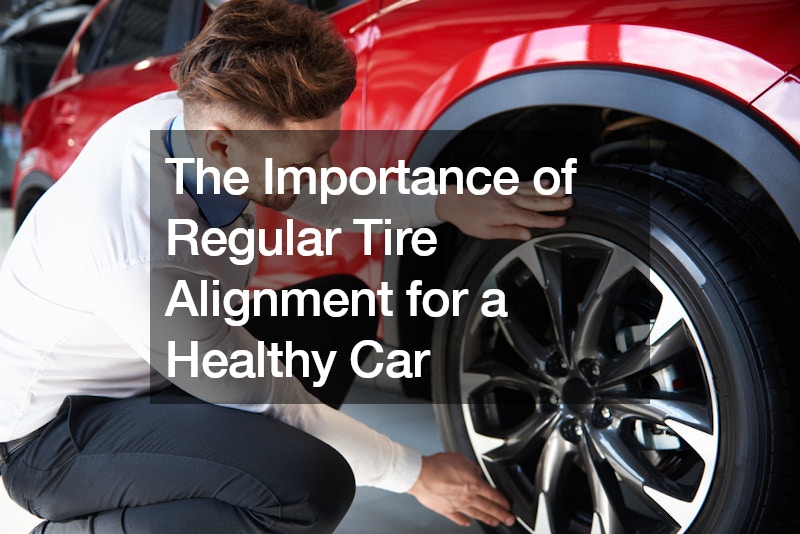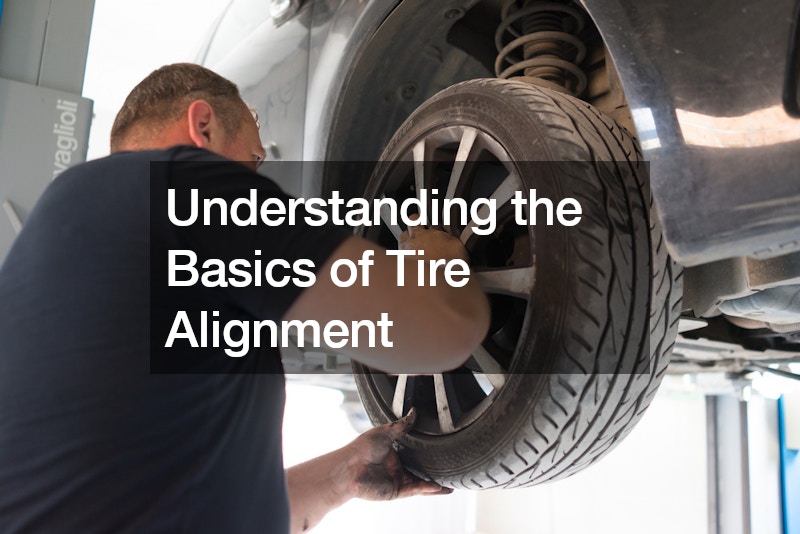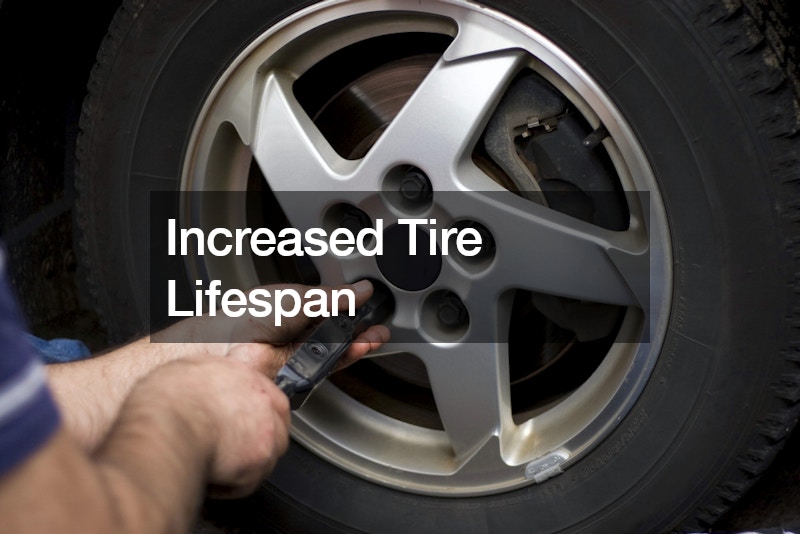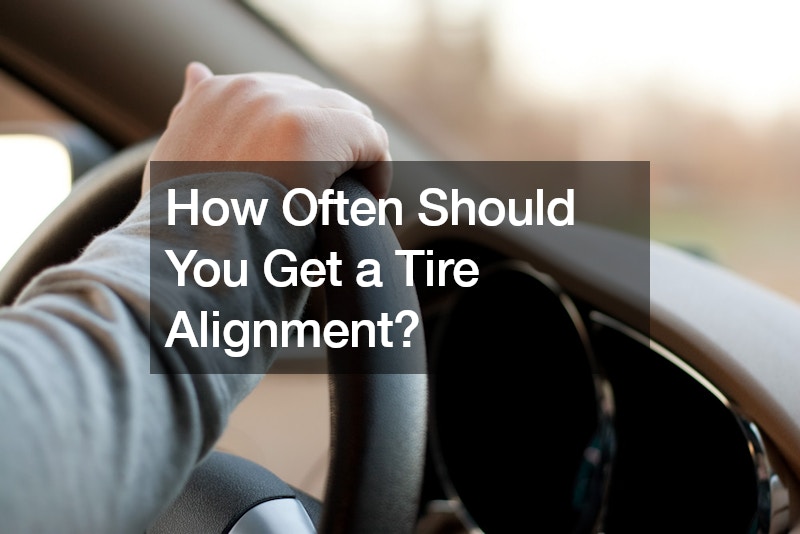
The Importance of Regular Tire Alignment for a Healthy Car

Tire alignment is a crucial aspect of vehicle maintenance that often goes overlooked by many car owners. Ensuring proper tire alignment not only contributes to a smoother ride but also enhances vehicle safety, increases the lifespan of your tires, and improves fuel efficiency. In this comprehensive guide, we’ll explore the basics of tire alignment, the different types of services available, and the many benefits of keeping your wheels properly aligned. Whether you’re visiting a local auto repair shop or seeking advice from auto dealers, understanding the importance of tire alignment is essential for maintaining a healthy car.
Understanding the Basics of Tire Alignment

Tire alignment, also known as wheel alignment, involves adjusting the angles of your vehicle’s wheels to ensure they meet the manufacturer’s specifications. Proper alignment ensures that your tires make contact with the road at the correct angle, which is vital for a functioning car. Misalignment can lead to uneven tire wear, poor handling, and reduced fuel efficiency, which can quickly become costly issues if not addressed.
Routine car repairs should always include checking the alignment of your wheels. This helps detect any adjustments that need to be made to keep your car in optimum condition. Regularly aligned tires contribute to a longer lifespan for your vehicle, promoting a healthy car in the long run. In fact, according to a study by the Car Care Council, proper tire alignment can improve fuel efficiency by up to 10% and extend tire life by 25,000 miles.
For a functioning car, it’s essential to understand how tire alignment affects other components, such as suspension and steering systems. These systems work together to provide a smooth and safe driving experience. Ensuring proper alignment helps prevent unnecessary strain on these systems, reducing the need for frequent auto repairs and enhancing overall vehicle performance and safety.
Types of Tire Alignment Services
Several types of tire alignment services are available at your local auto body repair shop. The most common types are front-end alignment, thrust alignment, and four-wheel alignment. Front-end alignment focuses solely on the front wheels, correcting issues like camber, caster, and toe. Thrust alignment ensures that all four wheels are squared with each other, helping to correct alignment issues affecting the vehicle’s straight-line stability. Four-wheel alignment adjusts all four wheels, making it the most comprehensive service and ideal for vehicles with independent rear suspensions or if you notice uneven tire wear on all tires.
Choosing the right service depends on your vehicle type and its specific needs. Consulting with professionals at an auto body repair shop will provide you with tailored advice to keep your car in healthy condition. They will recommend the best alignment service to ensure your vehicle’s wheels are properly adjusted. Additionally, understanding the differences between these services can help you make an informed decision for maintaining optimal tire performance and prolonging tire life.
Proper alignment is essential for maintaining a healthy car, as it affects everything from tire wear to vehicle handling. By opting for the right service and seeking help from experts, you can ensure that your car remains in optimal condition and runs smoothly on the road. Regular alignment checks can prevent more costly repairs down the line and keep your vehicle safe and reliable.
Improved Vehicle Handling and Safety
One of the primary benefits of proper tire alignment is improved vehicle handling and safety. When your wheels are correctly aligned, your car responds more predictably to steering inputs, making driving safer and more enjoyable. This is particularly important during emergency maneuvers, where precise handling can prevent accidents.
Tire rotations are another essential aspect of maintaining a healthy car. Regularly rotating your tires ensures even wear, which contributes to better handling. By combining tire rotations with proper alignment, you can enjoy a more stable and safer driving experience.
Properly aligned wheels also reduce the risk of tire blowouts, which can be dangerous at high speeds. Keeping your car’s alignment in check ensures that your tires remain in good condition, enhancing overall safety on the road. This is especially important for those who frequently drive long distances or in challenging conditions.
Increased Tire Lifespan

Proper tire alignment significantly extends the lifespan of your tires. When your wheels are correctly aligned, your tires wear evenly, reducing the need for premature replacements. This not only saves you money but also ensures that your vehicle remains in peak condition and drives more smoothly, enhancing your overall driving experience.
Visiting auto dealers for regular maintenance checks can help ensure that your wheels are always properly aligned. These professionals have the expertise to identify alignment issues and make necessary adjustments, promoting a healthy car and preventing misalignment-related problems such as uneven tire wear and poor handling. By addressing alignment problems early, you can prevent further damage to your tires and other components.
Increased tire lifespan also means fewer trips to tire shops and auto dealers for replacements, saving you both time and money. Additionally, well-aligned tires contribute to better fuel efficiency and a smoother ride, adding to the overall benefits of proper alignment. Proper alignment is a cost-effective way to maintain a functioning car and avoid frequent auto repairs. Investing in regular alignment checks pays off in the long run by preserving your tires’ quality and performance.
Better Fuel Efficiency
Proper tire alignment plays a crucial role in improving your car’s fuel efficiency. When your wheels are aligned correctly, your car moves with less resistance, which reduces the amount of fuel needed to maintain speed. This translates to lower fuel consumption and cost savings over time.
Regular auto repairs and maintenance checks should always include tire alignment to ensure optimal fuel efficiency. A healthy car not only runs smoothly but also consumes fuel more effectively. By keeping your wheels properly aligned, you can significantly reduce your car’s carbon footprint and contribute to a greener environment.
Improved fuel efficiency also leads to fewer visits to gas stations, saving you both time and money. Investing in regular alignment checks and auto repairs ensures that your car remains in excellent condition and operates at its best. This is a simple yet effective way to promote a functioning car and enjoy a better driving experience.
Smoother and More Comfortable Ride
Proper tire alignment contributes to a smoother and more comfortable ride. When your wheels are aligned correctly, your car glides effortlessly over the road, reducing vibrations and bumps. This alignment helps in achieving a balanced and controlled driving experience, which is particularly beneficial during long drives and daily commutes. This makes driving more enjoyable and less fatiguing, especially on long journeys.
Local auto repair shops often offer alignment services to keep your car running smoothly. By visiting these professionals regularly, you can ensure that your wheels are always in perfect alignment, enhancing your driving comfort. They use advanced equipment and techniques to fine-tune your vehicle’s alignment, which further ensures optimal handling and a pleasant ride. A healthy car with well-aligned wheels provides a more pleasant and relaxed driving experience.
A smoother ride also means less wear and tear on your vehicle’s suspension and steering systems. Proper alignment minimizes strain on these components, which helps in avoiding costly repairs and extending the lifespan of your car’s critical systems. This reduces the need for frequent auto repairs and helps maintain a functioning car. Proper alignment not only benefits your tires but also preserves the overall condition of your vehicle, ensuring a longer lifespan and better performance.
Common Symptoms of Misaligned Wheels

Recognizing the common symptoms of misaligned wheels can help you address the issue before it leads to more significant problems. Uneven tire wear is one of the most apparent signs of misalignment. If you notice that your tires are wearing down more on one side, it’s time to check your alignment.
Another symptom of misaligned wheels is your car pulling to one side while driving. This can make it challenging to keep your vehicle straight and may require constant steering adjustments. Addressing this issue promptly is essential for maintaining a healthy car and ensuring safe driving conditions.
Steering wheel vibration is another indication of misaligned wheels. If you feel vibrations through the steering wheel, especially at higher speeds, it’s a sign that your alignment needs to be checked. Regular visits to car paint protection services and auto repair shops can help detect and correct alignment issues early, promoting a functioning car.
How to Check for Misalignment Yourself
While professional alignment checks are recommended, there are a few ways you can check for misalignment yourself. First, inspect your tires for uneven wear patterns. If you notice that one side of the tire is more worn than the other, it’s a clear sign that your alignment is off.
Another way to check for misalignment is to observe how your car behaves on a straight, flat road. If your vehicle drifts to one side without steering input, it’s an indication that your wheels are misaligned. Performing this simple test can help you identify alignment issues early and address them promptly.
Finally, pay attention to any unusual vibrations or noises coming from your wheels. These could be signs of misalignment or other issues, such as the need for windshield replacements or tire balancing. Regularly checking your car for these symptoms can help maintain a healthy car and prevent more severe problems down the road.
What to Expect During a Tire Alignment Service
When you visit a motor vehicle accident attorney or an auto repair shop for a tire alignment service, you can expect a thorough inspection of your wheels and suspension system. The technician will first assess the condition of your tires and check for any underlying issues that might affect the alignment process, such as worn-out suspension components or uneven tire wear. The technician will use specialized equipment to measure the angles of your wheels and compare them to the manufacturer’s specifications.
The alignment process typically involves adjusting the camber, caster, and toe angles of your wheels. Camber refers to the angle of the wheels when viewed from the front, while caster is the angle of the steering pivot when viewed from the side. Toe alignment, on the other hand, involves adjusting the angle at which the tires point inward or outward. These adjustments ensure that your vehicle’s wheels are positioned correctly for optimal performance and safety.
Once the adjustments are made, the technician will test drive your car to ensure that the alignment is correct and your vehicle handles properly. They will also verify that the steering wheel is centered and check for any residual issues that might affect your driving experience. Regular tire alignment services are essential for maintaining a functioning car and ensuring optimal performance on the road. Proper alignment not only extends tire life but also improves fuel efficiency and driving comfort.
How Often Should You Get a Tire Alignment?

The frequency of tire alignment depends on several factors, including your driving habits, road conditions, and the type of vehicle you drive. As a general rule, it’s recommended to have your alignment checked every 6,000 to 10,000 miles or at least once a year. However, if you frequently drive on rough roads or experience symptoms of misalignment, it’s best to have it checked more often.
Regular visits to tire shops for alignment checks can help detect and address issues early, preventing further damage to your tires and suspension system. A functioning car requires consistent maintenance, and alignment checks should be an integral part of your routine.
Consulting with professionals at auto repair shops or tire dealers can provide you with personalized advice on how often to get your alignment checked. By following their recommendations, you can ensure that your car remains in excellent condition and enjoy a safer, more comfortable driving experience.
Maintaining proper tire alignment is essential for a functioning car. Regular alignment checks and adjustments contribute to better vehicle handling, increased tire lifespan, improved fuel efficiency, and a smoother ride. By recognizing the common symptoms of misaligned wheels and knowing how to check for alignment issues, you can address problems early and prevent more significant issues down the road. Visiting auto repair shops, tire dealers, and auto body repair shops for professional alignment services ensures that your wheels are correctly adjusted and your car remains in peak condition. Investing in regular alignment checks is a cost-effective way to maintain a healthy car and enjoy a safer, more enjoyable driving experience.


